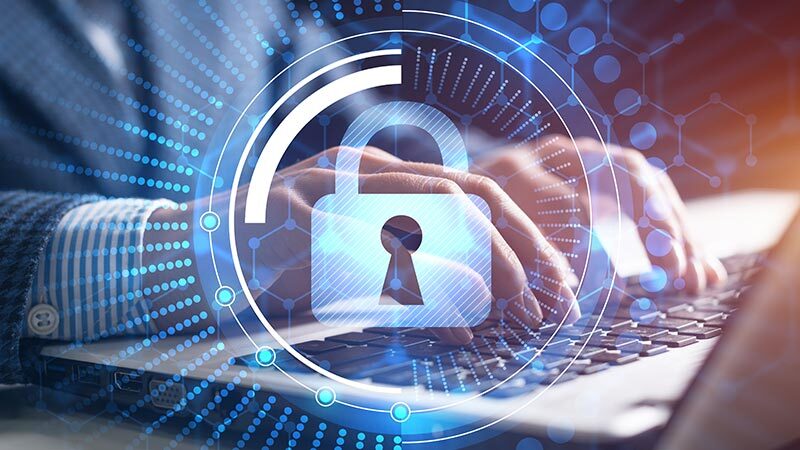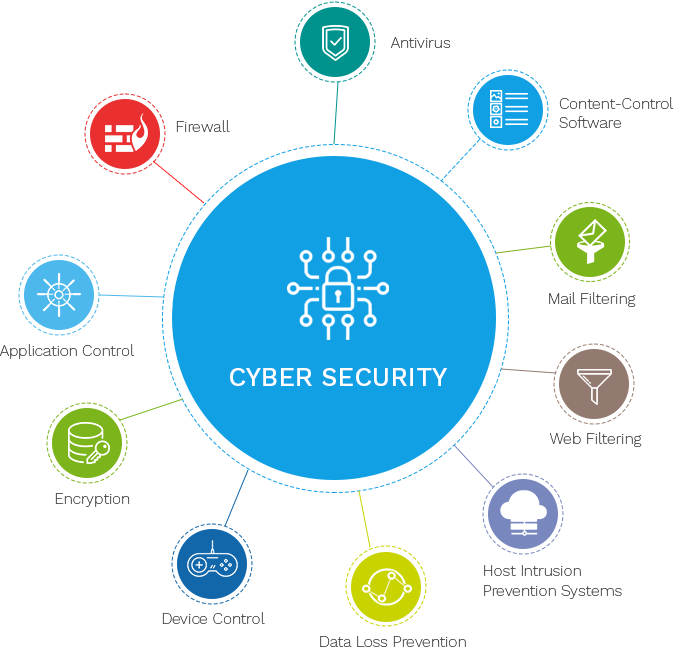Experience Assurance with the Best Cyber Security Services in Dubai Today
Exploring Exactly How Cyber Protection Functions to Safeguard Your Online Presence
In today's digital landscape, safeguarding one's on the internet existence has actually come to be increasingly vital, with cyber dangers progressing at a startling rate. Cyber safety and security uses a multifaceted strategy, incorporating innovative modern technologies like firewall programs, file encryption, and multi-factor authentication to secure delicate details. The complexity of these systems increases inquiries concerning their performance and application. Exactly how do these technologies interact to develop a seamless shield against cyber threats? And what role does behavioral analytics play in this detailed internet of security procedures? These are vital questions that warrant additional expedition in our quest for electronic safety and security.
Comprehending Cyber Dangers
In the electronic landscape, cyber threats represent an awesome difficulty, needing a nuanced understanding of their nature and potential influence. These risks include a vast array of malicious tasks managed by people, teams, or even nation-states, targeting sensitive information, interfering with operations, or triggering reputational damage. Understanding cyber risks starts with determining the different kinds they take, consisting of malware, phishing, ransomware, and distributed denial-of-service (DDoS) assaults.
Malware, or harmful software, includes viruses, worms, and trojans that infiltrate systems to trigger or swipe data injury. Ransomware encrypts sufferers' information, demanding a ransom for its launch, posturing substantial operational and economic dangers.
Acknowledging the motivations behind these dangers is crucial. Cybercriminals frequently look for financial gain, while hacktivists may pursue ideological objectives. State-sponsored enemies may target vital framework for reconnaissance or destabilization purposes. By comprehensively understanding the diverse nature of cyber risks, organizations can much better prepare for potential susceptabilities and tactically allot resources to reinforce their defenses against these ever-evolving dangers.
Secret Cyber Safety Technologies
As companies make every effort to secure their electronic possessions, crucial cybersecurity technologies play a vital function in strengthening defenses versus cyber threats. IDS screen network web traffic for dubious tasks, while IPS proactively block prospective dangers, making certain real-time protection.
In addition, antivirus and anti-malware solutions remain basic in determining and alleviating destructive software application. They utilize heuristic and signature-based techniques to detect unknown and known risks. Endpoint detection and response (EDR) systems better enhance protection by offering thorough visibility into endpoint activities, making it possible for speedy event feedback.
Identification and access monitoring (IAM) modern technologies make sure that just licensed customers get accessibility to essential resources, consequently minimizing the threat of unapproved data accessibility. Multifactor verification (MFA) adds an additional layer of security, requiring customers to give multiple verification aspects.
Furthermore, protection info and event monitoring (SIEM) systems aggregate and evaluate safety information, providing insights into possible susceptabilities and facilitating positive danger management. These innovations jointly form a durable framework, encouraging companies to preserve a resilient cybersecurity pose.
Role of Firewalls and File Encryption
Firewall softwares and security are essential parts of a durable cybersecurity strategy, each offering a distinctive yet corresponding duty in safeguarding digital settings. Firewalls function as obstacles in between relied on inner networks and untrusted exterior entities. By managing incoming and outbound network web traffic, they protect against unapproved access to data and systems. Firewalls utilize predefined safety and security guidelines to block or allow data packages, effectively securing sensitive details from cyber risks. They are the initial line of defense, filtering website traffic and making certain only reputable communications are allowed.
File encryption, on the various other hand, changes readable information into an inscribed format that can only be analyzed with a particular cryptographic secret. This procedure makes sure that information stays personal and secure throughout transmission or storage space. Even if obstructed, secured info is provided ineffective to unauthorized customers without accessibility to the decryption key. File encryption is essential for protecting sensitive information such as monetary information, personal recognition information, and proprietary service information.
With each other, firewalls and security give a detailed defense reaction. While firewall programs manage accessibility and guard networks from unapproved access, security safeguards data honesty and privacy. Their combined application is vital in mitigating dangers and ensuring the security of digital assets in a progressively interconnected world.

Relevance of Multi-Factor Authentication
While firewall programs and security create the backbone of cybersecurity, improving defenses even more requires the implementation of multi-factor authentication (MFA) MFA adds an additional layer of security by needing users to validate their identification via 2 or more different factors before obtaining access to sensitive info or systems. These elements normally include something the individual understands (a password), something the customer has (a safety token or mobile phone), and something the user is (biometric verification such as a finger print or face acknowledgment)
The value of MFA in safeguarding on the internet presence is paramount in today's digital landscape. With cyber hazards becoming significantly advanced, relying only on conventional password-based authentication leaves systems vulnerable to violations. MFA dramatically minimizes the danger of unauthorized access by making it tremendously more tough for cybercriminals to endanger an account. Even if a password is stolen, the added verification actions function as a powerful barrier.
.jpg?width=1920&height=1080&name=Four%20Kinds%20of%20Cybersecurity%20Companies%20(1).jpg)
Behavioral Analytics in Cyber Safety
Behavioral analytics stands for an essential advancement in cybersecurity, supplying an innovative approach to hazard detection and avoidance. By evaluating patterns in user actions, this method recognizes anomalies that might suggest possible cyber hazards.
This technology is particularly effective in discovering insider threats and zero-day strikes, which are typically missed out on by conventional safety systems. Insider threats, where individuals within an organization abuse accessibility privileges, can be tough and especially damaging to identify. Best Cyber Security Services in Dubai. Behavioral analytics offers a layer of analysis that can capture subtle inconsistencies in habits, such as uncommon access patterns or information transfers, before they intensify right into significant safety cases
Moreover, the vibrant nature of behavioral analytics allows it to adjust to progressing dangers, offering continual security as cyberattack strategies change. As companies significantly depend on electronic frameworks, incorporating behavior analytics into cybersecurity approaches makes sure a resistant protection, protecting delicate data and keeping count on digital communications.
Conclusion
Finally, the multifaceted method of cyber safety, including innovations such as firewall programs, file encryption, multi-factor verification, and behavioral analytics, plays a critical duty in securing on the internet visibility. By filtering website traffic, securing data transmission, calling for numerous verification techniques, and keeping an eye on user activity for anomalies, these innovations jointly deal with the discover here complexities of modern-day cyber risks. This layered defense not just safeguards personal and financial details but additionally ensures continuous protection in an ever-evolving digital landscape.

As organizations make every effort to protect their electronic assets, key cybersecurity technologies play a critical function in fortifying defenses against cyber risks. Firewall softwares use predefined protection guidelines to block or allow information packages, successfully shielding sensitive info from cyber hazards.This modern technology is particularly efficient in detecting insider dangers and zero-day assaults, which are typically missed by conventional protection systems. By filtering website traffic, protecting data transmission, needing several verification approaches, and keeping an eye on customer task for anomalies, these modern technologies collectively address the intricacies of contemporary cyber risks.